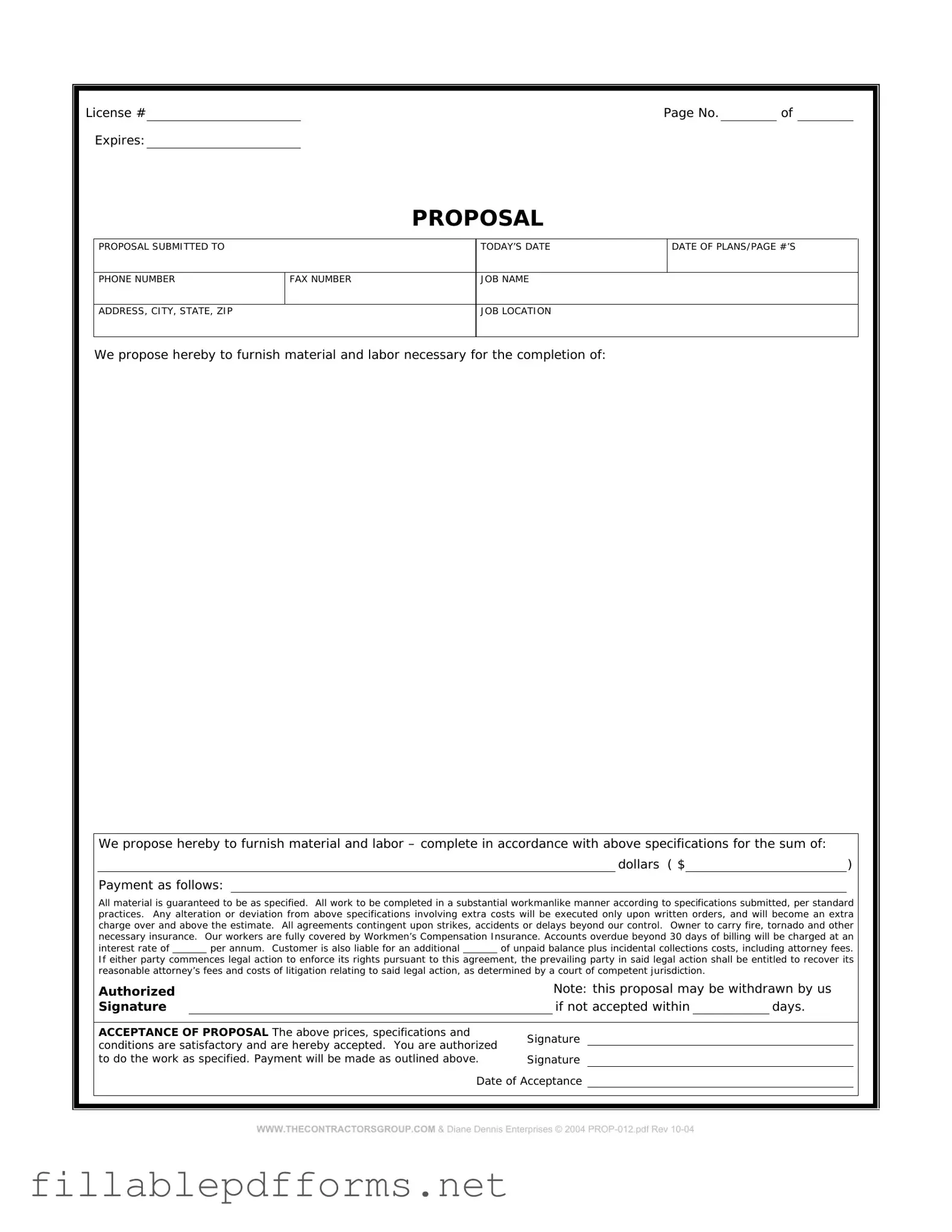Construction proposal form PDF Template
The Construction Proposal Form is a crucial document used in the construction industry to outline the specifics of a project and the terms under which it will be completed. This form serves as a formal proposal from contractors to clients, detailing costs, timelines, and project scope. Understanding its components can help ensure that both parties have clear expectations and a solid foundation for their working relationship.
Launch Editor Here
